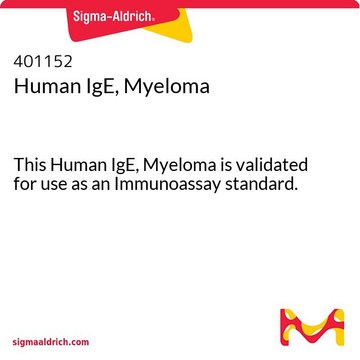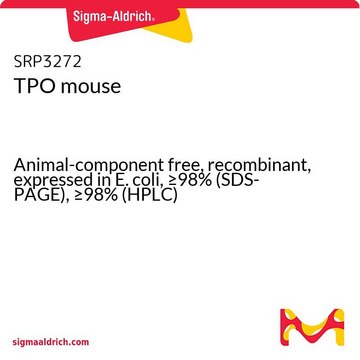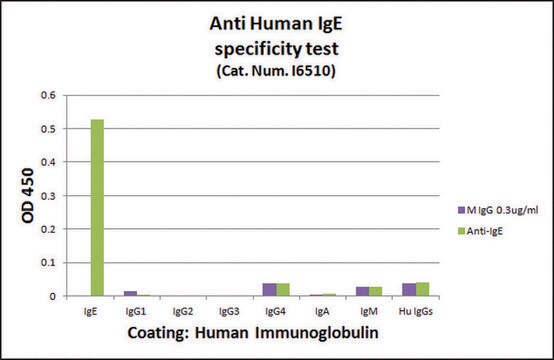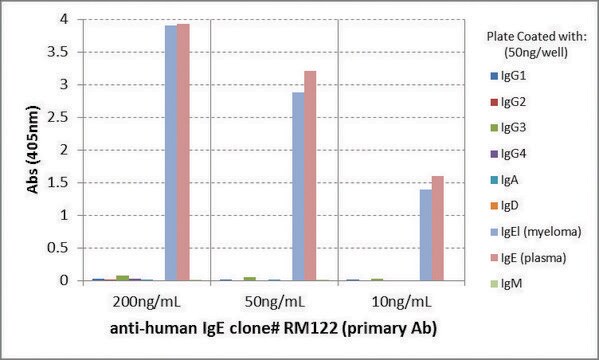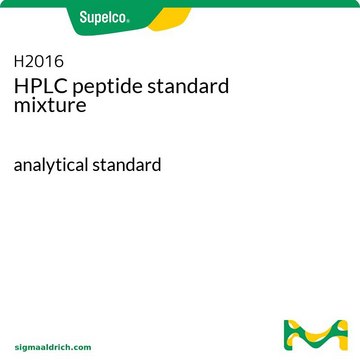SRP4193
IL-33 human
recombinant, expressed in E. coli, ≥98% (SDS-PAGE), ≥98% (HPLC)
Synonim(y):
C9orf26, DKFZp586H0523, DVS27, NF-HEV, NFEHEV, RP11-575C20
Zaloguj sięWyświetlanie cen organizacyjnych i kontraktowych
About This Item
Kod UNSPSC:
12352202
NACRES:
NA.32
Polecane produkty
pochodzenie biologiczne
human
rekombinowane
expressed in E. coli
Próba
≥98% (HPLC)
≥98% (SDS-PAGE)
Formularz
lyophilized
masa cząsteczkowa
~18.1 kDa
opakowanie
pkg of 10 μg
zanieczyszczenia
endotoxin, tested
numer dostępu NCBI
Warunki transportu
wet ice
temp. przechowywania
−20°C
informacje o genach
human ... IL33(90865)
Opis ogólny
IL-33 (interleukina 33) jest silną cytokiną immunomodulacyjną należącą do rodziny IL-1, która obejmuje również IL-1β i IL-18. Białko to zostało po raz pierwszy zidentyfikowane jako czynnik jądrowy wykazujący dominującą ekspresję w ludzkich naczyniach śródbłonka. IL-33 wykazuje wysoki poziom ekspresji w komórkach śródbłonka i nabłonka, takich jak keratynocyty, które są w bezpośrednim kontakcie ze środowiskiem.
Rekombinowana ludzka IL-33 wytwarzana z Escherichia coli jest homodimerycznym, nieglikozylowanym łańcuchem polipeptydowym składającym się ze 160 aminokwasów i mającym całkowitą masę cząsteczkową 18,1 kDa.
Rekombinowana ludzka IL-33 wytwarzana z Escherichia coli jest homodimerycznym, nieglikozylowanym łańcuchem polipeptydowym składającym się ze 160 aminokwasów i mającym całkowitą masę cząsteczkową 18,1 kDa.
Działania biochem./fizjol.
IL-33 (interleukina 33) działa jako cytokina zewnątrzkomórkowa, a także przemieszcza się do jądra, gdzie hamuje ekspresję genów. Działa jako ligand dla ST2/ IL-1 receptor-like 1 (growth STimulation expressed gene 2), a ST2 ulega ekspresji na komórkach takich jak hematopoetyczne komórki progenitorowe CD34+, eozynofile, bazofile, komórki T-helper 2 (Th2) oraz komórki dendrytyczne, NK (natural killer), śródbłonkowe i tuczne. Polimorfizmy w tym genie, jak również w jego receptorze są powiązane z atopowym zapaleniem skóry, alergiami i astmą. Uważa się również, że białko to działa jako cytokina profibrogenna, sygnalizując poprzez ST2, gdzie ułatwia stymulację i progresję zwłóknienia w różnych typach narządów i tkanek, takich jak mięśniaki płuc, wątroby i macicy. U biorców przeszczepu nerki, podwyższony poziom IL-33 może być zaangażowany w patogenezę przewlekłej dysfunkcji przeszczepu (CAD).
Postać fizyczna
Sterylnie filtrowane i liofilizowane z 10 mM fosforanem sodu, pH 7,5.
Rekonstytucja
Rozpuścić w wodzie do stężenia 0,1-1,0 mg/ml. Roztwór można następnie rozcieńczyć w innych buforach wodnych.
Centrifuge the vial prior to opening. Avoid freeze-thaw cycles.
Ta strona może zawierać tekst przetłumaczony maszynowo.
Kod klasy składowania
11 - Combustible Solids
Klasa zagrożenia wodnego (WGK)
WGK 3
Temperatura zapłonu (°F)
Not applicable
Temperatura zapłonu (°C)
Not applicable
Wybierz jedną z najnowszych wersji:
Certyfikaty analizy (CoA)
Lot/Batch Number
Nie widzisz odpowiedniej wersji?
Jeśli potrzebujesz konkretnej wersji, możesz wyszukać konkretny certyfikat według numeru partii lub serii.
Masz już ten produkt?
Dokumenty związane z niedawno zakupionymi produktami zostały zamieszczone w Bibliotece dokumentów.
The Potential Role of IL-33 in Renal Transplant Recipients with Chronic Allograft Dysfunction.
Zhang J et al
Annals of Transplantation : Quarterly of the Polish Transplantation Society, 21, 611-618 (2016)
Esophageal Epithelial-Derived IL-33 Is Upregulated in Patients with Heartburn.
Sei H et al
PLoS ONE, 11(4), e0154234-e0154234 (2016)
Targeting the IL-1 family members in skin inflammation.
Jensen LE
Current Opinion in Investigational Drugs, 11(11), 1211-1220 (2010)
Ying Lei et al.
PloS one, 10(7), e0133774-e0133774 (2015-07-28)
In several clinical and experimental studies IL-33 and its receptor have been found to play important roles in the development of asthma and allergic airway inflammation. We evaluated the effects of vaccination against IL-33 in a mouse model of airway
Elizabeth A Oczypok et al.
The Journal of allergy and clinical immunology, 136(3), 747-756 (2015-05-02)
Single nucleotide polymorphisms in the human gene for the receptor for advanced glycation end-products (RAGE) are associated with an increased incidence of asthma. RAGE is highly expressed in the lung and has been reported to play a vital role in
Nasz zespół naukowców ma doświadczenie we wszystkich obszarach badań, w tym w naukach przyrodniczych, materiałoznawstwie, syntezie chemicznej, chromatografii, analityce i wielu innych dziedzinach.
Skontaktuj się z zespołem ds. pomocy technicznej